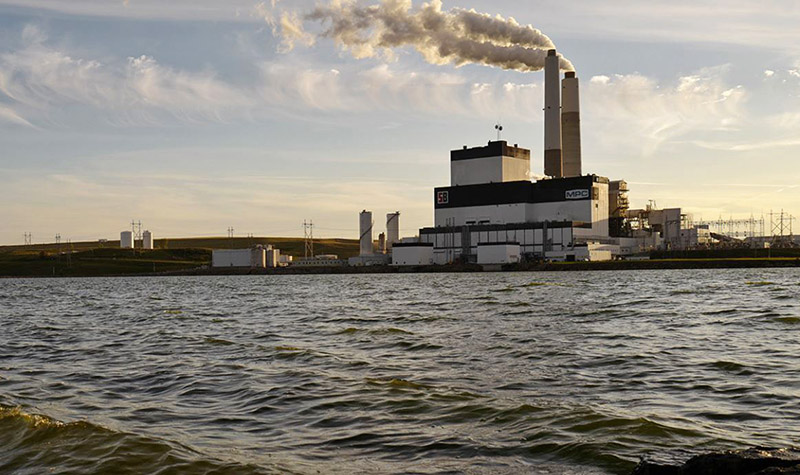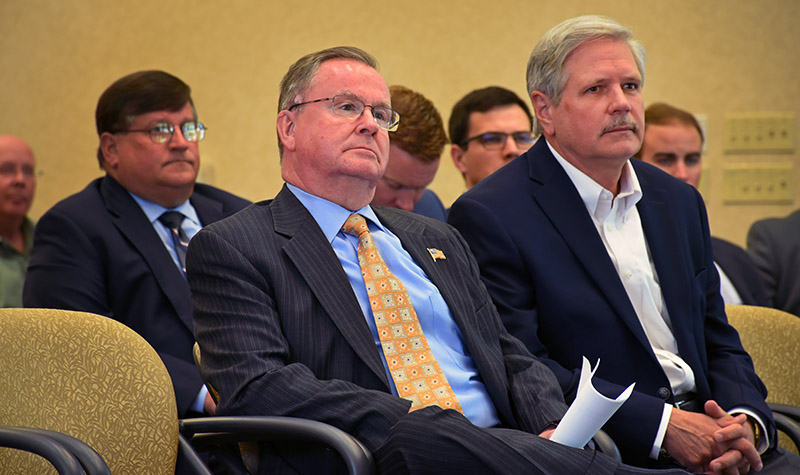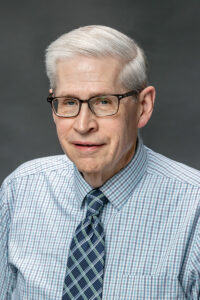DOE funds projects involving EERC
Carbon capture, utilization and storage technologies focus of research

UND’s Energy & Environmental Research Center (EERC) has confirmed a U.S. Department of Energy (DOE) announcement made in mid-September that the agency is funding two projects in which the Center is involved.
U.S. Sen. John Hoeven previously said the EERC will receive $5 million from DOE for its Plains Carbon Dioxide Reduction (PCOR) Partnership Initiative to accelerate the deployment of carbon capture, utilization and storage (CCUS) technologies. In addition, Hoeven said Grand Forks-based Minnkota Power Cooperative (MPC) will receive $9.8 million for Project Tundra in which the EERC is involved.
According to DOE, the EERC will form the PCOR Partnership to foster the development of carbon capture, utilization and storage in northwestern states and Canadian provinces.
“Areas included in this region are dominated by fossil energy production and coincide with abundant opportunities for geologic storage in sedimentary basins,” the agency said. “The partnership will identify and address onshore regional transport challenges facing commercial deployment of CCUS in an expanded region, compared to past initiatives.”
DOE visits EERC
In August, Hoeven brought two top federal officials to the EERC — Steven Winberg, DOE assistant secretary for fossil energy, and Lou Hrkman, DOE deputy assistant secretary for clean coal and carbon management. They toured EERC facilities and discussed research opportunities with the Center, including Project Tundra and PCOR. Hoeven is a member of the Senate Energy and Water Development Appropriations Committee.

According to Minnkota, the $9.8 million award from the DOE provides access to $15 million from the state of North Dakota’s Lignite Research Fund. The cooperative said funding will be used to conduct a Front-End Engineering Design (FEED) study on Project Tundra’s proposed carbon capture system at the Milton R. Young Station near Center, N.D.
“Project Tundra is a unique opportunity for North Dakota to lead the world in the advancement of carbon capture technologies,” said Mac McLennan, Minnkota president and CEO. “This Department of Energy grant will assist us in completing advanced research and engineering design on the project – one of the final steps before deciding whether to move forward and begin construction.”
$1 billion project
With an estimated cost of $1 billion, the goal for Project Tundra is to equip Unit 2 at the coal-based Young Station with technologies designed to capture more than 90 percent of carbon dioxide (CO2) emissions. The CO2 would then be permanently stored in a deep geologic formation more than a mile underground. The FEED study will support advanced design work, engineering and evaluation of project economics.

“North Dakota is leading the way in developing CCUS technologies and these funds will help to advance these efforts, including enabling the completion Project Tundra’s engineering and design study,” Hoeven said. “Developing and deploying this technology is a win both for consumers, who will continue to have access to affordable energy, and for environmental stewardship.”
During the EERC visit, Hoeven noted that many countries will continue to use coal as an energy source. He stressed the importance of “cracking the code” to make CCUS technologically and economically viable.
“If we crack the code, it doesn’t just work in North Dakota, it works across the country and it works around the globe,” he said. “Why don’t we develop the solution so they can do it with the best economics and the best environmental standards?”
In addition to research on the CO2 capture system, Minnkota is also conducting significant research on deep geologic storage of CO2 near the Young Station. A geophysical survey will be completed near Center to gather information about rock layers in the deep subsurface.



